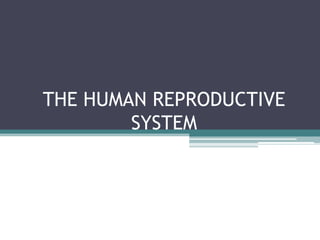The human reproductive system allows humans to reproduce. The male reproductive system produces sperm through testes and other organs, while the female reproductive system houses and nourishes an egg and fetus. During intercourse, sperm fertilizes an egg within the female's uterus or fallopian tubes. A fertilized egg may implant and develop into a fetus, which gestates within the uterus for around nine months. Both male and female reproductive systems mature at puberty to enable reproduction.




































